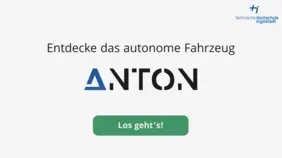The first topic was an overall concept for a smartphone application for Automated Valet Parking Systems (AVPS). AVPS relieve the driver of the entire parking process. In this case, the driver initiates the parking process at dedicated spaces in front of the car parks. Likewise, the driver must initiate the parking process via an appropriate external interface. This external interface can be realised by an application on the driver's smartphone, which makes everything operable from the parking search to the payment process after parking out. Current implementations were analysed with regard to functions and potential for improvement. Based on these investigations, a prototype of the user-centric smartphone application for AVPS was developed.
The result is a click prototype of a smartphone application. This serves as an interface for activating the AVPS. In addition to the realisation of the parking as well as pick-up process, the application pursues innovative approaches to cooperation with local businesses. In addition, vehicles can be washed, charged or used as shared vehicles during their parking time. In order to avoid full city centres and to create potential for more green spaces, the application also provides services for e-scooter/e-bike booking. In this way, the user remains as flexible as possible.
The second topic deals with the development of an innovative user interface for the ANTON research vehicle. This is to display generally understandable information about ANTON on displays. It should also be analysed which information can be displayed and how this can be presented interactively. In the long term, this should provide visitors to exhibitions with entertaining information, which should increase the acceptance of automated vehicles within society.
Here, too, a click prototype was created for the ANTON onboard touchscreen monitor. This has three main functions. Firstly, more information can be obtained about ANTON and the CARISSMA research and test centre. Furthermore, the user can see the object recognition by the camera. This is to help the user understand how the vehicle detects objects and react accordingly. Finally, an individual parkour can be created, which is then driven by the vehicle. By using augmented reality (AR) glasses, the user can see the parkour from the vehicle's point of view and experience its reaction to the obstacles.



![[Translate to English:] Logo Akkreditierungsrat: Systemakkreditiert](/fileadmin/_processed_/2/8/csm_AR-Siegel_Systemakkreditierung_bc4ea3377d.webp)








![[Translate to English:] Logo IHK Ausbildungsbetrieb 2023](/fileadmin/_processed_/6/0/csm_IHK_Ausbildungsbetrieb_digital_2023_6850f47537.webp)


